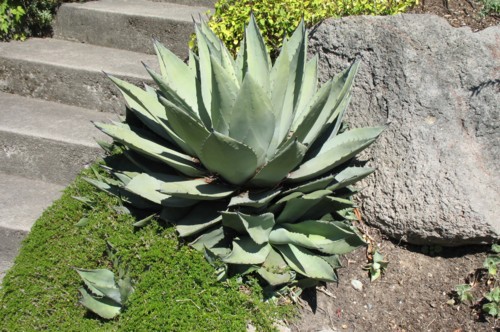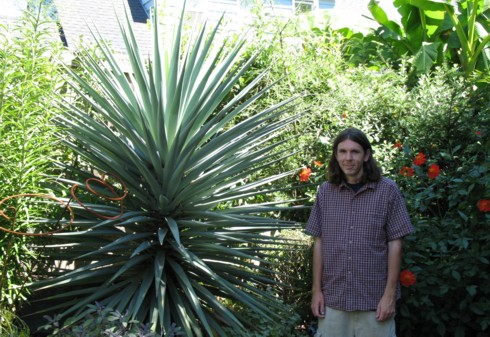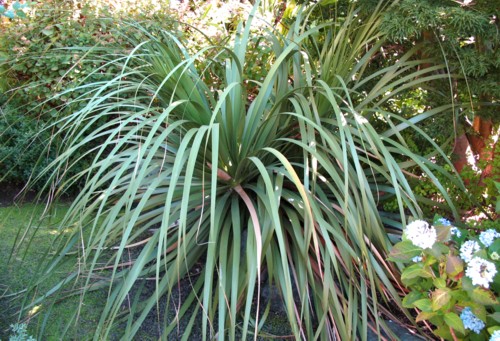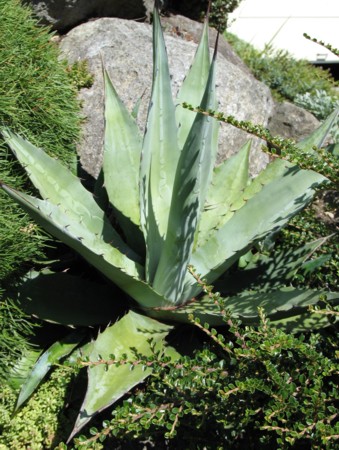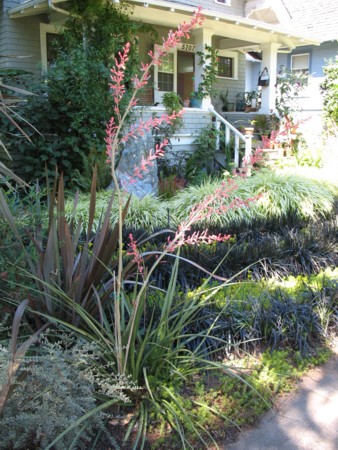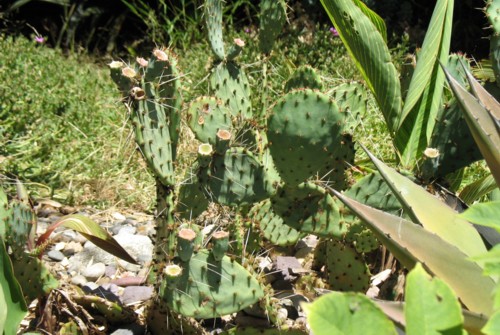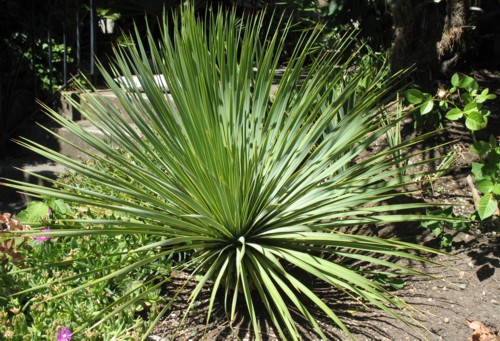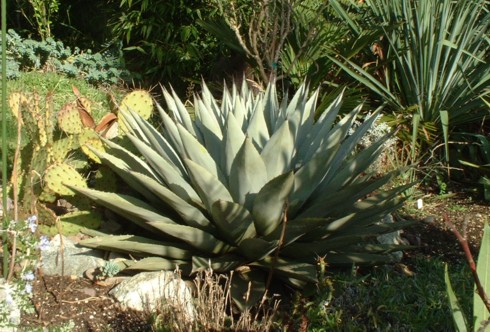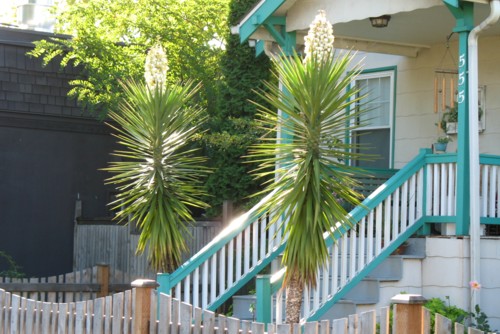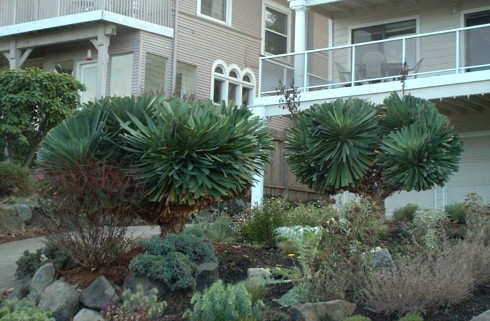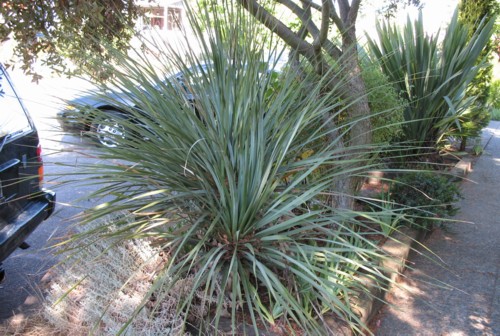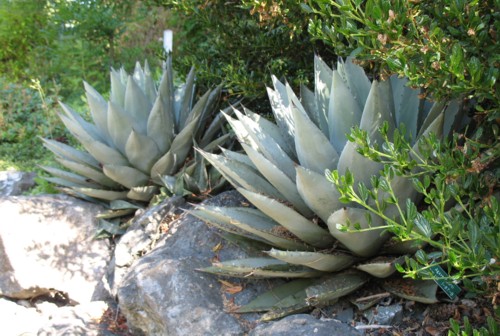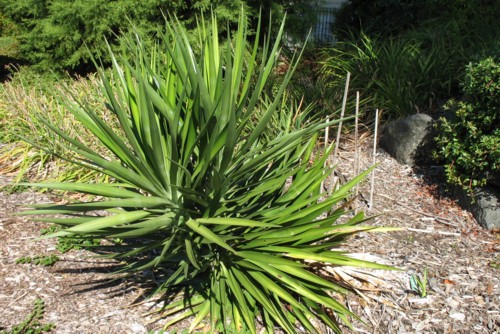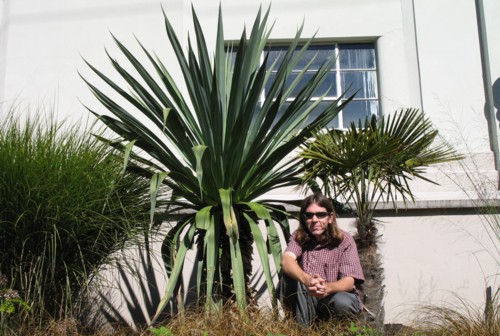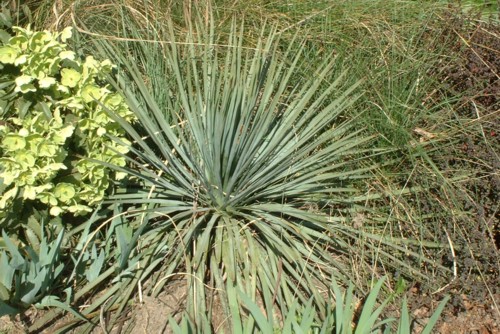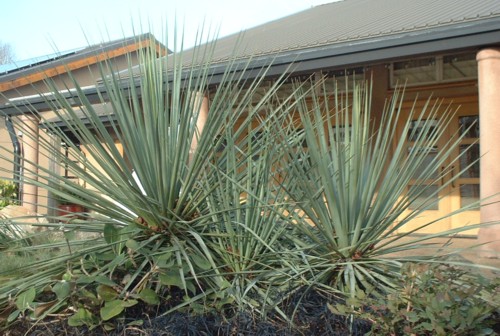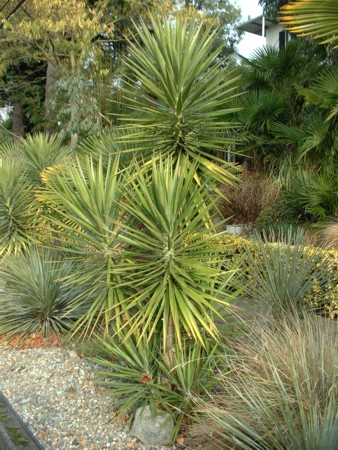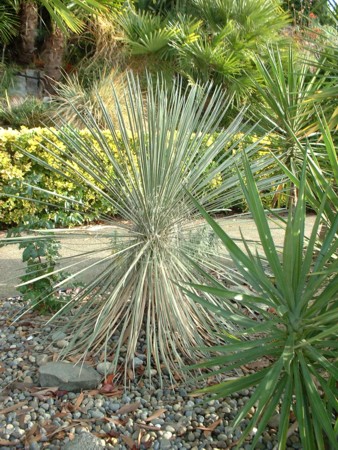|
Desert Plants in the Seattle Area
Seattle proper receives about 35-40 inches of precipitation annually - certainly not too much for many desert plants to thrive. Also, the urban setting provides excellent opportunities for xeric plants to grow in places where other plants won't thrive, including poor, dry soils and areas with reflected heat from concrete or buildings. Many sheltered nooks and microclimates with excellent heat accumulation can also be found, making it possible to grow some desert plants that would be unhappy in other Northwest gardens. |

Plants and Gardens Gallery |
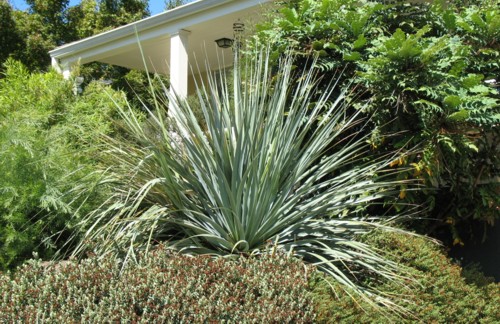
In this garden on 55th Ave NE, Nolina nelsoni sits perched atop a rockery among many other interesting plants. It will eventually form a tall trunk.
In the same garden, what appears to be a nice, broad-leafed form of Agave parryi.
Also in this garden, a fabulous specimen of Yucca schottii. This plant clearly likes our climate, thriving here with rich soil and summer watering. This is not surprising, as the Arizona mountains where it originates are actually rather cool and moist. This picture also illustrates how Yuccas grow into better specimens when they are planted out at a small size, rather than as field-dug, trunked specimens.
This Nolina in the same garden is probably yet unnamed species going under the provisional name 'La Siberica'.
And one more from this garden, another Agave in the rockery, possibly A. chrysantha.
Agave americana 'Marginata' in a parking strip on 55th Ave. NE. The etiolated leaves on this plant suggest it was grown under low light conditions and planted out recently (although, sometimes this plant just grows that way anyhow).
Hesperaloe parviflora in a Ravenna neighorhood garden.
A close-up of the unopened flowers of Hesperaloe parviflora.
Seattle cacti! Opuntia phaecantha in a garden on 74th Ave. N. It bloomed in the spring and produced the fruits you see here.
In the same garden, a young plant of Yucca rostrata (or possibly Y. thompsoniana).
Yucca glauca from the Midwest is seldom found in nurseries now, but it is occasionally seen in some older Seattle gardens. This specimen (in the same garden on 74th) is unique, because Y. glauca does not usually form a trunk. A small trunk can develop if the plant never blooms.
Also in this garden, an Agave parryi that has been here since the 1980s.
In the summer of 2006, the Agave pictured above bloomed! You can see the remains of the leaves at right. I didn't get any pictures of it in bloom, but I did at least see and photograph the flower stalk.
A closer shot of the seed capsules and dead blossoms. I haven't found out whether they produced any viable seed. Its natural pollinators are probably absent from our region.
In this home on NE 80th Street, someone chose two Yucca aloifolia to flank the entrance to their house, with quite nice results. Here they are blooming in September.
Although this is not how I would prune a Yucca, these large specimens of Yucca gloriosa along Seattle's east Lake Washington Boulevard are impressive.
Nolina nelsoni on 42nd Ave. in Seattle's Madison Park neighborhood, growing in the shade of Quercus rugosa.
Agave parryi on 42nd Ave. This plant probably began life in the hot sun, but is now heavily shaded by Quercus rugosa and some other shrubs.
Two plants of Agave parryi on the rockery at the Graham Vistor Center at Washington Park Arboretum. The plants are labeled Agave deserti, but this is incorrect.
Yucca aloifolia by the parking lot at the Graham Visitor Center, Washington Park Arboretum.
A white variegated form of Yucca recurvifolia in Kirkland.
Of all the interesting desert plants (and plants in general) to be found in Seattle gardens, this is perhaps the most surprising. It is a Furcraea species, a member of a genus usually thought to be far too cold-tender for the Pacific Northwest. However, a few species occur at quite high altitudes, and this plant must be one of these: according to a recent reworking of Furcraea taxonomy, it is probably F. parmentieri. These impressive plants have very large leaves and grow quickly, often forming a tall trunk. They tolerate rain quite well. This specimen can be found in front of a Seattle City Light substation on 75th Ave. NE west of Lake City Way.
At the same location this Yucca whipplei grew for some time, until it bloomed in the summer of 2005. This plant is monocarpic, meaning it dies after blooming - so you won't see it there now.
More Nolina nelsoni. These specimens can be found in the courtyard of the Univeristy of Washington Center for Urban Horticulture, along with some other interesting plants.
This dry planting strip between the sidewalk and the road has been mulched with gravel and planted up with many xeric plants, including this thriving Yucca aloifolia. This is in Seattle's Fremont neighborhood.
In the same neighborhood, the largest Dasylirion wheeleri I have seen in the Seattle area thus far.
Yucca elata is also quite happy in this situation. |
|
